Archaeology Class Makes a Spectacle in Online Exhibition
By Rebecca GoldfineWhile some museums—including the Bowdoin College Museum of Art—are organizing online exhibitions as a way to safely share art during the pandemic, students in Ambra Spinelli's spring archaeology class had planned an online show all along.
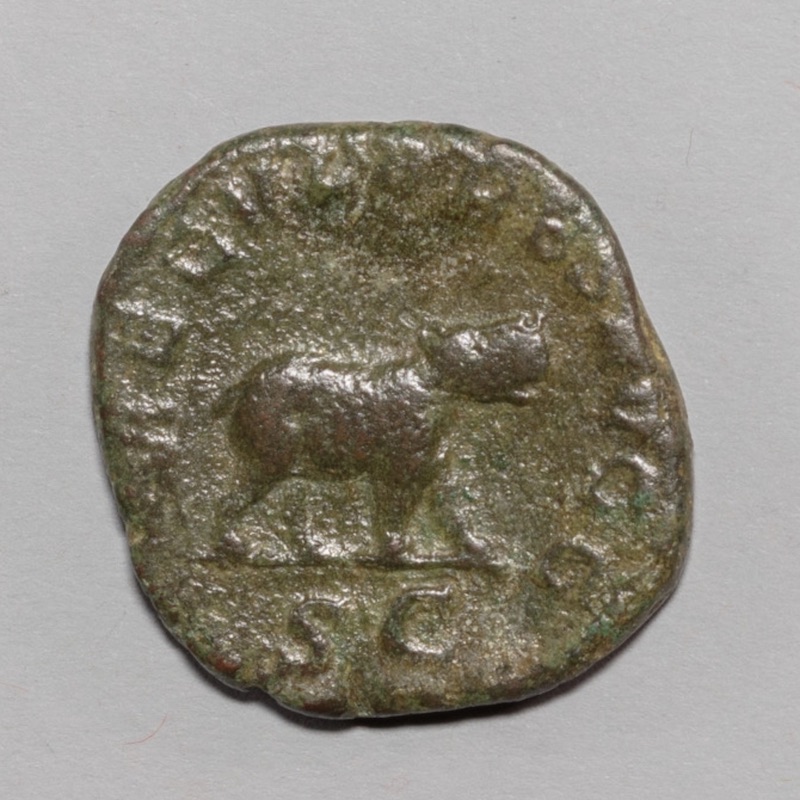
That show, Spectacle in Antiquity and Beyond, features displays of objects and photographs from ancient Greece and Rome to the twentieth century. Together, the objects in the exhibition's six galleries illuminate how large, spectacular events—a Roman gladiator fight, an Inuit kayak contest, a Christian pilgrimage, a Nazi march—can foster and sustain a shared identity and reinforce social cohesion.
Spinelli, who specializes in Roman art and archaeology, designed her course to culminate with a student-curated exhibition that spans centuries. "[The show] looks at spectacles as a way to connect people in time and space, as something that characterized both ancient and modern societies," she said.
The three students in the small Classics department class—Mike Brown ’20, Brooke Wrubel ’21, and Benjamin Wu ’18—were each responsible for two of the show's galleries. They selected objects from the Museum of Art and the Peary-MacMillan Arctic Museum collections and, after researching them, wrote object labels and introductory texts for their items.
"The collections here are stunning," Spinelli said. "The Museums have so much to offer—I wanted students to explore and engage with the many resources on campus."
The variety of pieces in Spectacle highlights the breadth of Bowdoin's collections, Wu said. "There are all these different ways to interpret these objects to form a story," he added. "A lot of the items we picked were either directly involved in the specific spectacles, or they were commemorating or depicting such spectacles."
An Online "Journey"
In a video chat, the three students and Spinelli recently discussed the merits of a curating an online exhibition versus a physical, three-dimensional one.
"We talked a lot about how we wanted people to interact with objects and galleries," Wrubel said. "Having everything all in one place encourages people to make different kinds of connections." The six galleries, she continued, "emphasize continuity and changes across time periods." Visitors can hop across history as they compare objects.
"A lot of emphasis, when it comes to exhibition design, is the juxtaposition of certain works so they can be in dialogue with one another," Wu added. "In a virtual exhibit, you have to find a new way of creating that." Having a user-friendly interface helps, he added. David Francis, senior interactive developer with Bowdoin's academic technology team, built the site for Spectacle. Other Bowdoin staff and faculty collaborators included Sean Burrus, Jim Higginbotham, Genevieve LeMoine, and Hannah Moore.

An online gallery can also offer a more personal experience, Spinelli argued. Viewers can enlarge an object, sometimes rotate it, and "get closer" to it than in a physical exhibition where display cases or ropes can prevent access. Clicking links provides more information, opens videos, or offers audio recordings that help explain an object's significance.
The other virtue of online exhibitions is that they don't need to be dismantled; they can stay on the internet for as long as the host and technology allow. Spinelli said Spectacle in Antiquity and Beyond can be included as a link on her students' resumes. Wrubel and Wu both aspire to work in the museum field. Brown is considering a career in the financial industry.
"This is something they have in their own portfolio," Spinelli said, so when they apply for jobs or internships—in museums or elsewhere—"it's really something that will put them in a stronger situation in the job market or in their future studies."
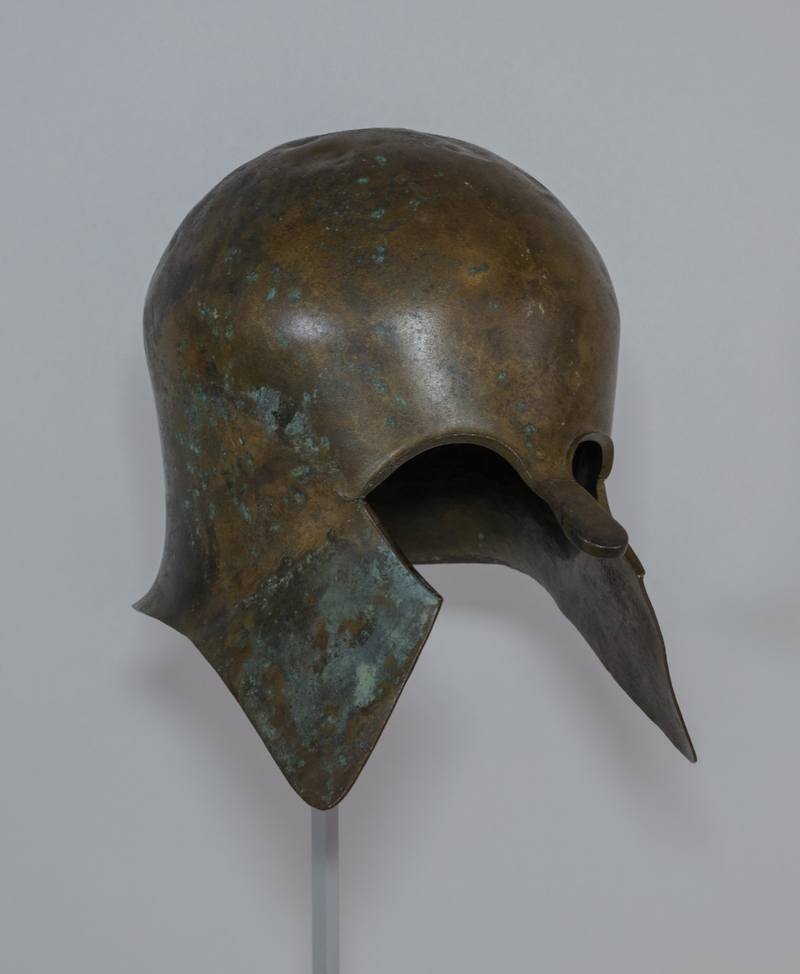
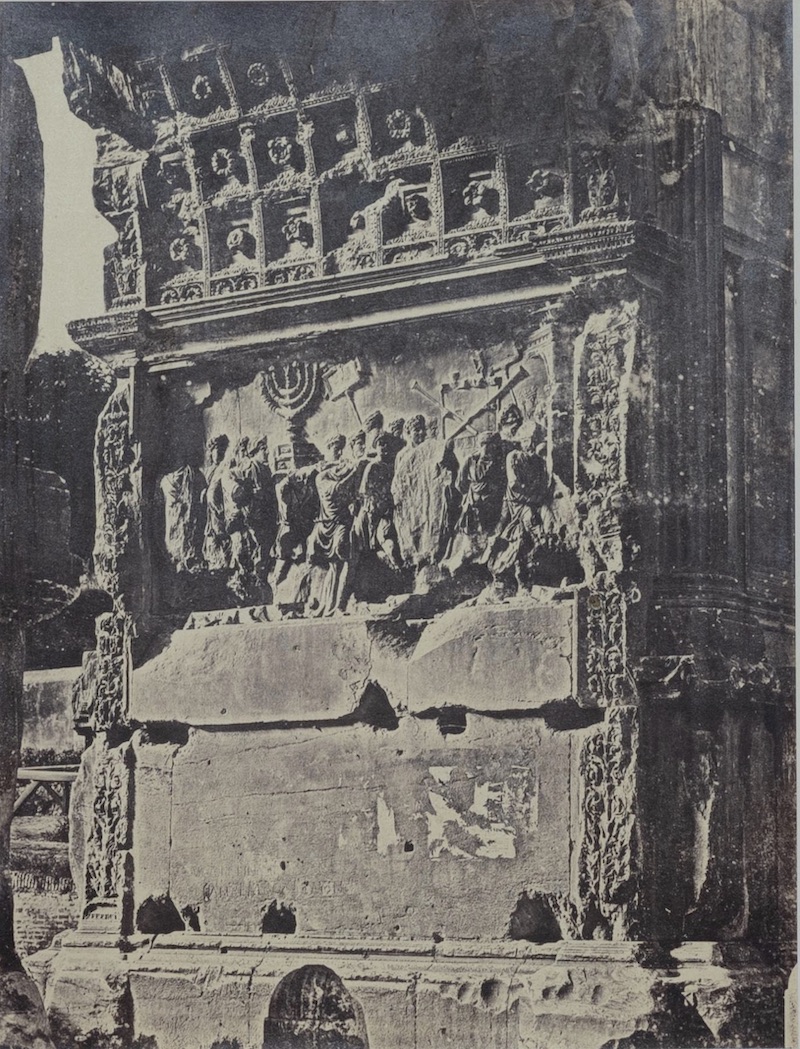
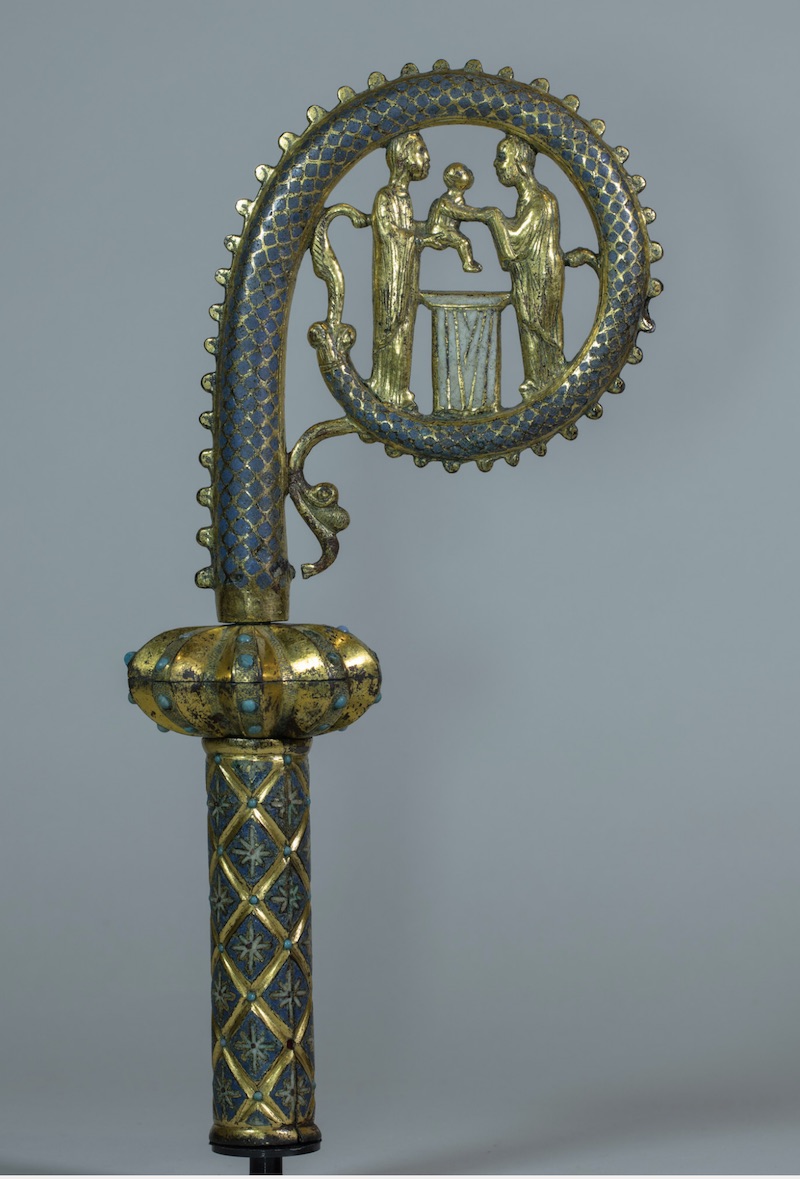
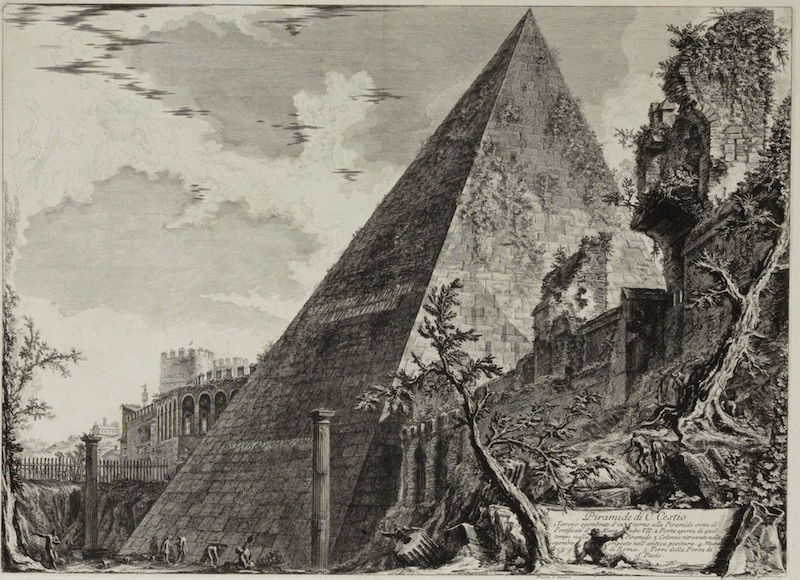
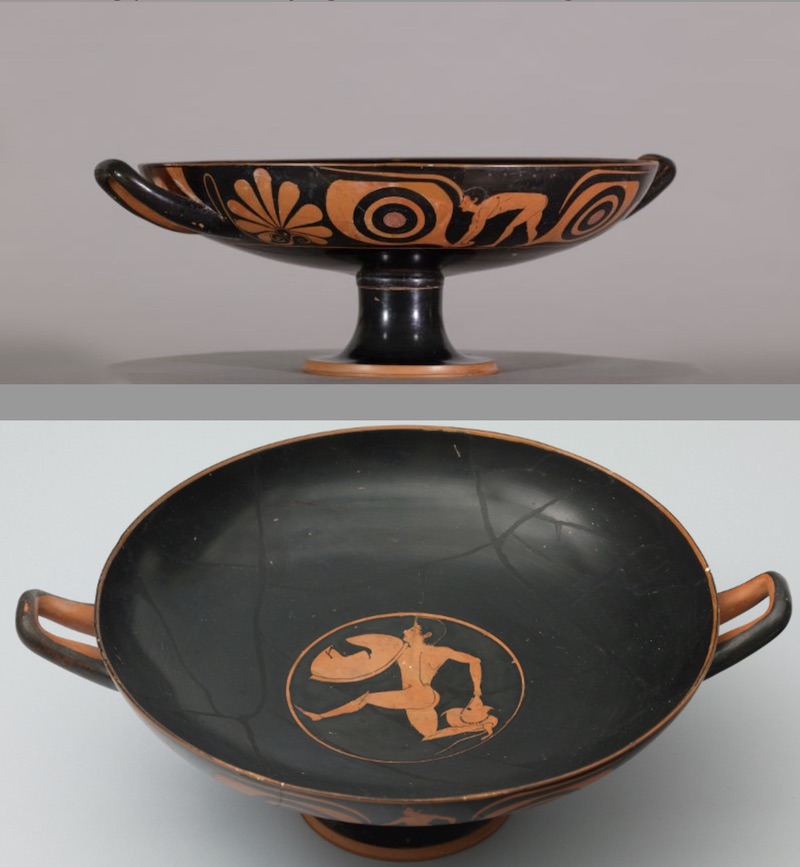

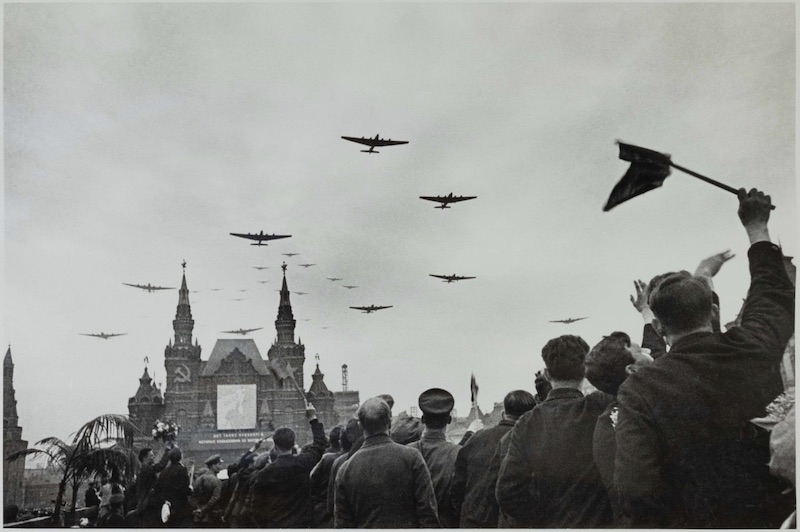
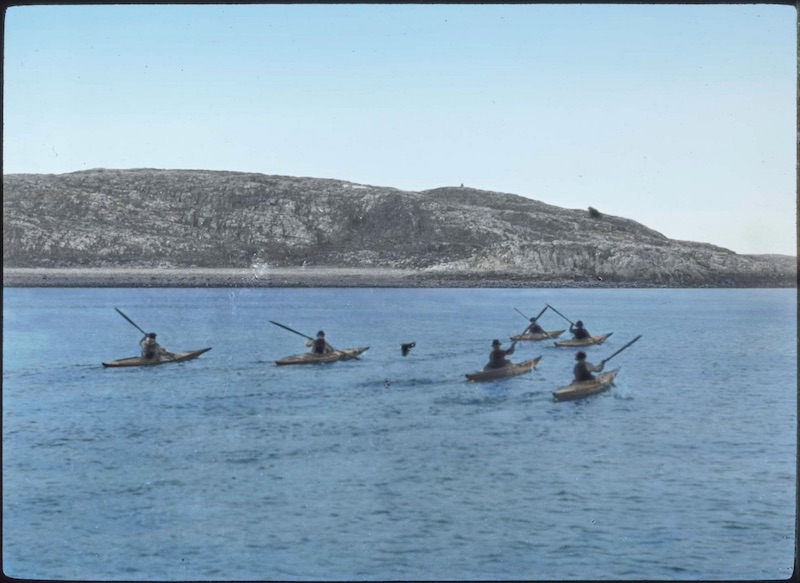








Highlights of the Show, Recommended by the Curators
Mike Brown: "The Greek and Roman sections of the gallery. The pieces are so interesting in the way they connect directly to the events themselves, like the tokens used for entrance to the theater or festivals. I think we had such interesting pieces that worked so well with what we wanted to do in terms of emphasizing theater and sporting events."
Benjamin Wu: Wu recommends visitors examine one of the objects they can interact with, like the Attic Red-Figure Eye Cup (in the Ancient Greece gallery) or the Dancing Satyr (in the Ancient Rome gallery) to show what a virtual exhibition can do. He also suggests people check out the Corinthian-style bronze helmet. "That one was interesting because it comes out bent out on its flares, on its cheek gaurds. It took us all some time to figure out what exactly caused it to be bent out....We learned that the helmets were ritually destroyed as a votive offering, which brings a whole new dimension to the helmet."
Brooke Wrubel: "I would say don’t miss the modern gallery because we have a photo of the Arch of Titus, and the wall label speaks to how Roman processions became the foundation for modern military parades, which encapsulates the idea of continuity and chance from the ancient world to today."